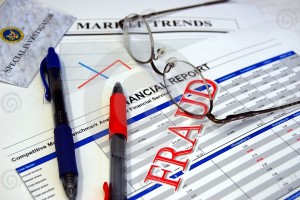Modern day examples of fraud don’t always take the form of mustachioed Ponzi-types with elaborate systems of deception. Today, elusive acts of fraud in the workplace are running rampant, especially throughout small businesses.
The ability to commit and get away with fraud has become even more accessible with the increased use of social technologies in the workplace. Tech savvy fraudsters can use anything from Facebook messaging to Snapchat to communicate plans for manipulating company funds in a way that is difficult to detect. If you or your client is suspicious of fraudulent activity in the workplace, it is essential to take the steps necessary to resolve the issue as quickly as possible.
The following four steps should be taken to stop any potential fraudulent behaviors:
- Detection of Potential Fraudulent Activity in the Workplace
The two main types of business fraud are (1) inappropriate personal use of business assets and (2) falsifying financial statements. These types of fraud can come in many forms, including but not limited to the following:
- Embezzlement,
- Forgery of official documents,
- Tampering with bank records,
- Inventory theft,
- Benefitting from placing a redundant order,
- Using company credit cards for personal expenses,
- Selling business assets under the market value,
- Manipulating the overtime periods, and
- Creating fictitious expenses and obtaining disbursements.
If any of these behaviors are suspected, it is important to investigate.
- Forensic Investigation
Although most employers wouldn’t like to think of their employees as the type to commit fraud, fraudulent behavior is surprisingly prevalent, especially among smaller businesses, making forensic analyses essential to retaining earned assets.
After likely fraudulent activity is detected, it is important to contact a forensic accountant as quickly as possible to avoid additional fraud-related losses.
A forensic accountant would be able to conduct an in-depth analysis of financial reports and determine whether suspicions of fraud have any grounding in financial data.
- Action
If necessary, a forensic accountant would be able to testify in court and use forensic data to explain the fraudulent behaviors discovered during the investigation.
- Resolution
After the aforementioned steps, any necessary litigation would result in an appropriate resolution and plans could be made to regain any lost assets as well as protect against future acts of fraudulent behavior.
If you or your client is suspicious of fraudulent behavior in the workplace, do not hesitate to contact our office at msgcpa@msgcpa.com or (646) 661-3801.


